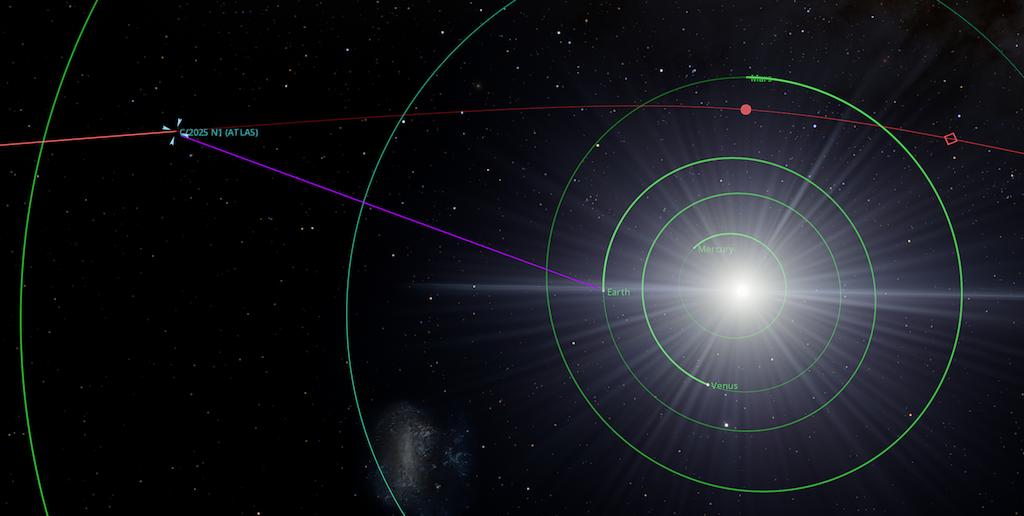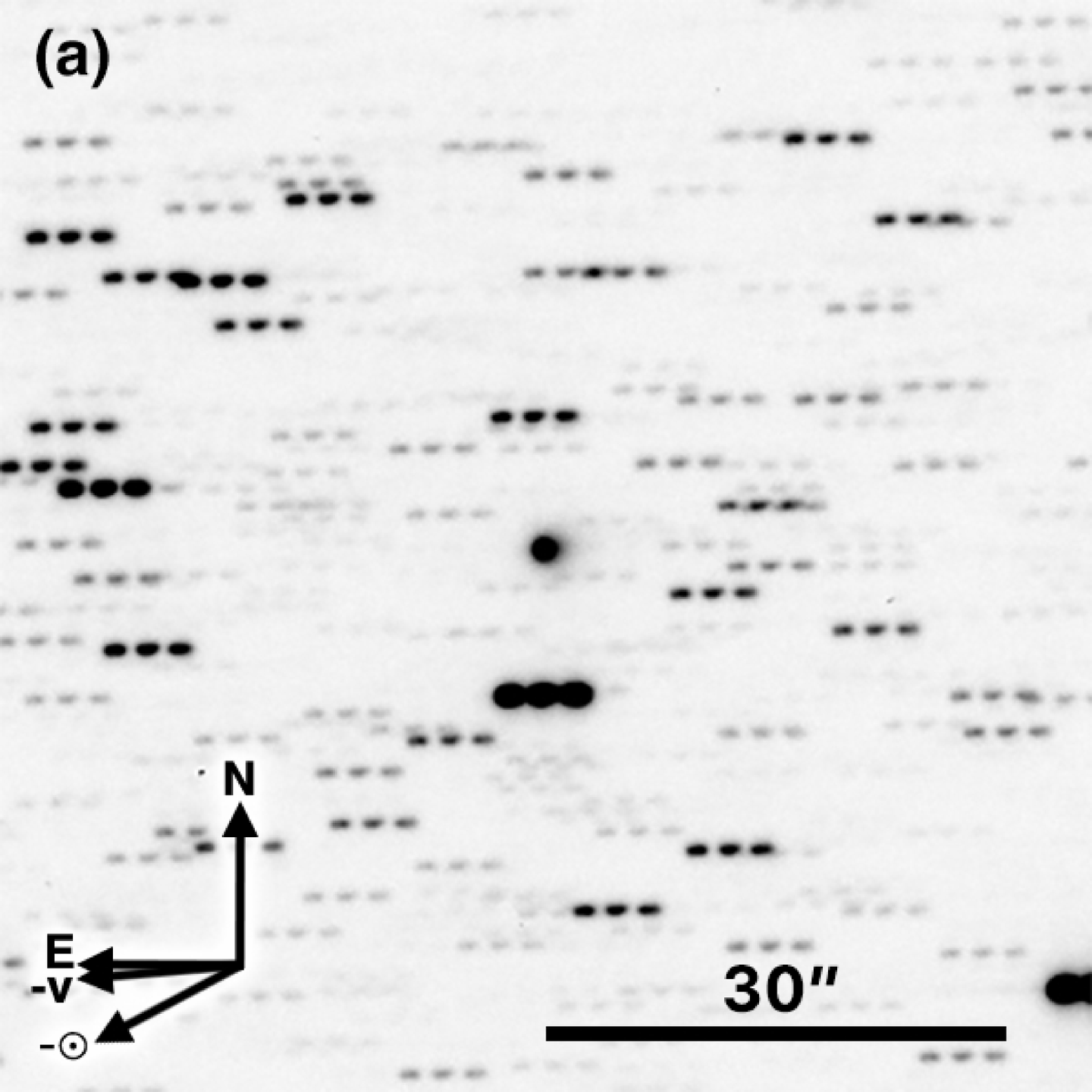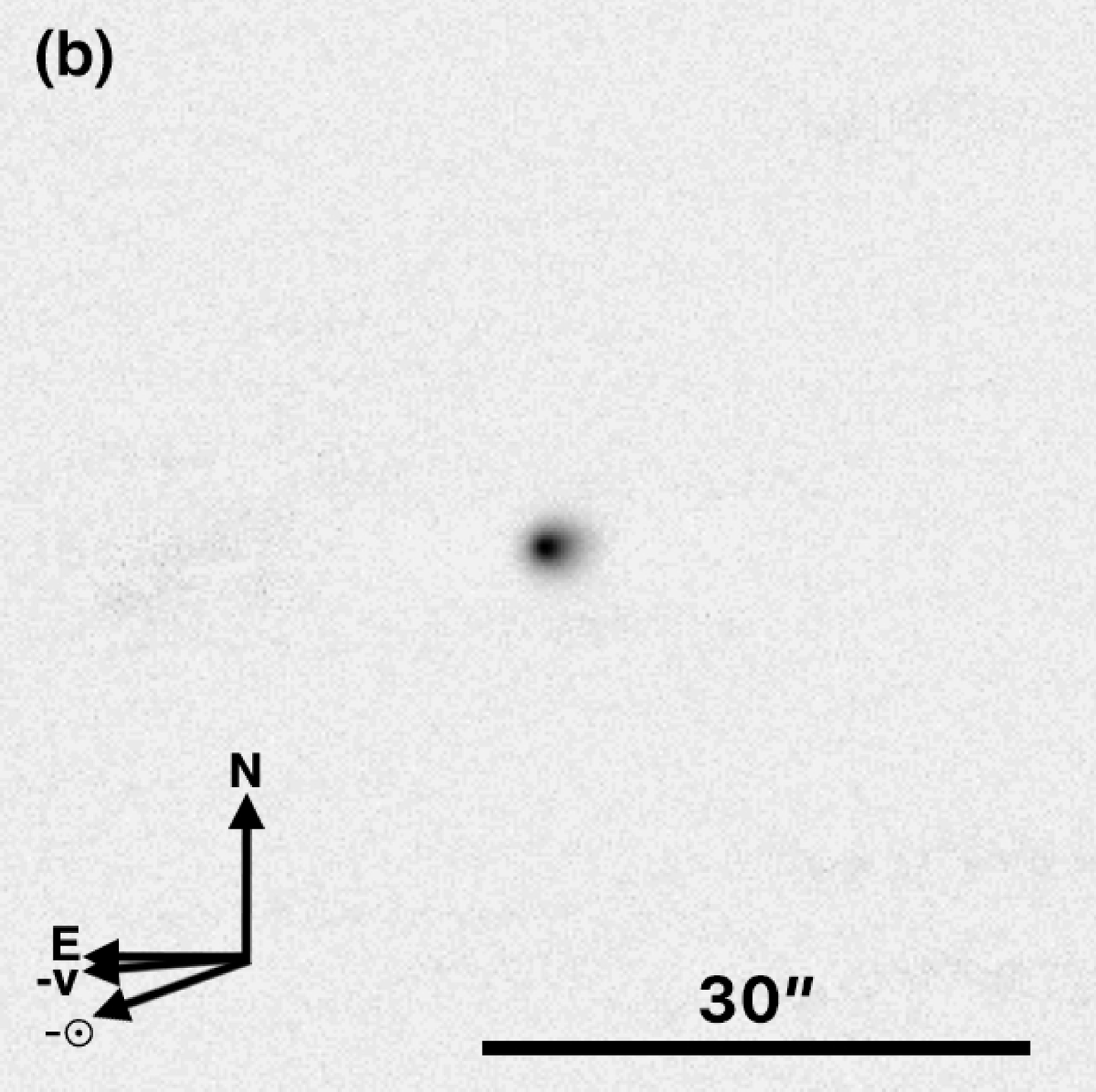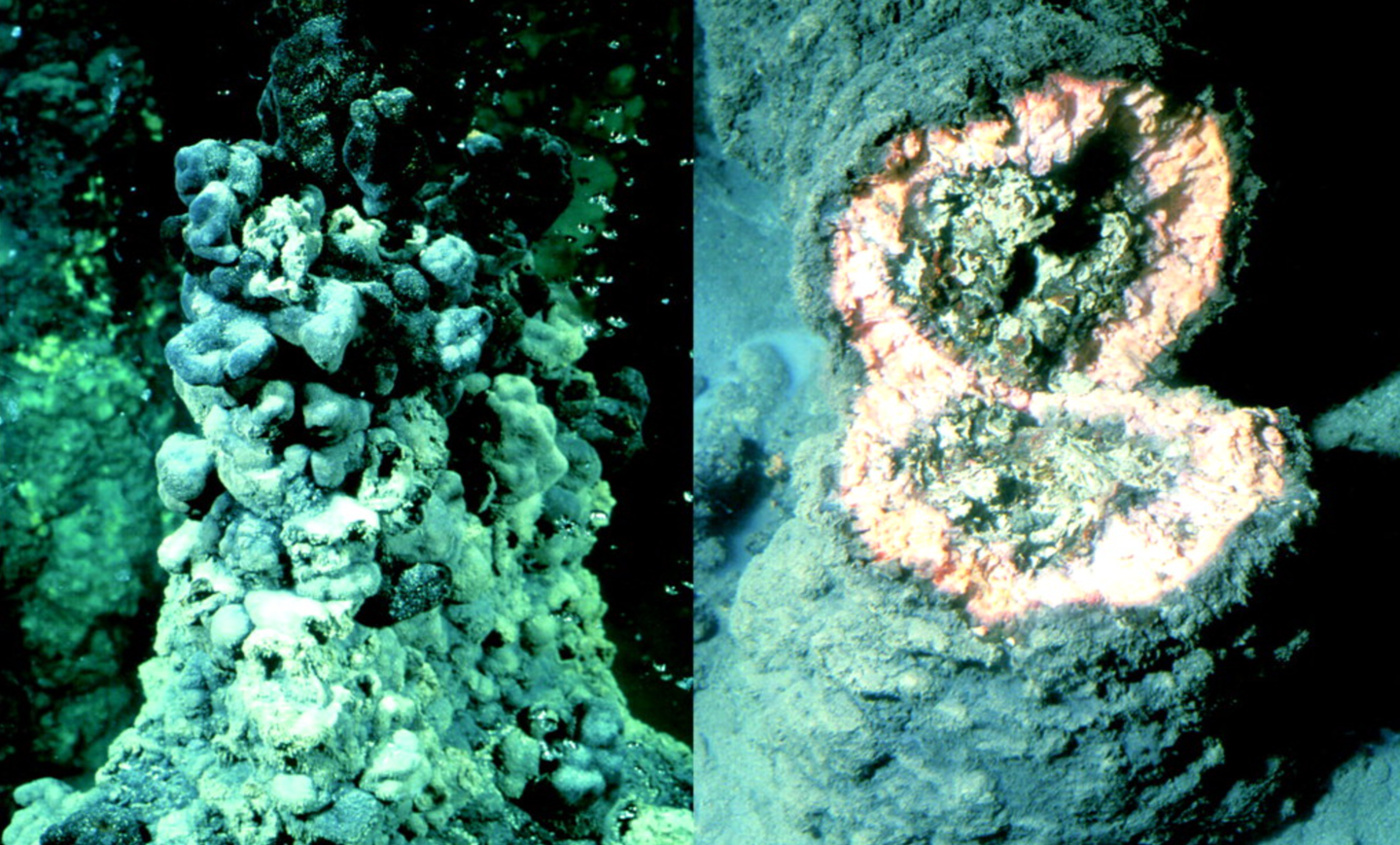Is interstellar object 3I/ATLAS an alien probe? Harvard physicist sparks debate
Scientists debate alien origins of 3I/ATLAS, a fast-moving interstellar object offering rare clues about other star systems.

3I/ATLAS, a newly discovered interstellar object, has scientists racing to gather data, with some suggesting it might be alien technology. (CREDIT: Bob Trembley / SpaceEngine)
On July 1, 2025, astronomers caught sight of a mysterious object racing through the solar system. This object, now named 3I/ATLAS, became only the third known visitor from outside our planetary neighborhood. Detected by NASA’s ATLAS telescope in Chile, 3I/ATLAS has ignited a wave of global scientific activity—and some heated debate.
While many researchers see it as a fascinating, fast-moving comet, one Harvard physicist believes it could be something more: an alien probe.
The Path That Defies Gravity
What first caught scientists’ attention was the object’s hyperbolic orbit. This type of orbit doesn’t loop around the Sun—it zooms in and shoots back out into deep space. With an orbital eccentricity of 6.2, it far exceeds the 1.2 value seen in the first interstellar object, ʻOumuamua, and the 3.6 of 2I/Borisov. According to Olivier Hainaut from the European Southern Observatory, this path proves that 3I/ATLAS entered our system from another star.
Its path also defies expectation. The object will swing near Mars, Venus, and Jupiter—an alignment Harvard’s Avi Loeb claims is so unlikely it might not be random. Loeb, a theoretical physicist, estimates the chance of such a path occurring naturally is just 0.005 percent. He also points out that the object will reach its closest point to the Sun on October 29, when it will be hidden from Earth’s view—possibly, he suggests, to avoid detection.
Loeb further argues that the object’s 20-kilometer diameter and lack of typical comet gases point to artificial origins. “It might have targeted the inner Solar System as expected from alien technology,” he said. Still, many astronomers disagree.
A Natural Wanderer or Alien Visitor?
Richard Moissl, Head of Planetary Defence at the European Space Agency, strongly doubts any alien connection. “There have been no signs pointing to non-natural origins in the available observations,” he said. He believes the object likely formed around a distant star and is a space-weathered natural body with weak cometary activity.
Related Stories
- Scientists discover mysterious object that may be the oldest comet ever detected
- The Sun’s secret role in shaping comet paths and meteor showers
- Astrophysicists find structure in 74 exocomet belts orbiting nearby stars
Moissl and his colleagues are gathering global telescope data to better understand 3I/ATLAS’s orbit, brightness, and composition. These observations may offer insight into what distant planetary systems are like. “Collecting this data will provide us with clues about what the object is made of,” Moissl said, “and how faraway planetary systems might look.”
Loeb, however, urges caution. He believes each interstellar object should be studied carefully, arguing that the implications of alien technology are too serious to ignore. He previously suggested that ʻOumuamua, discovered in 2017, might also be of artificial origin.
Scientists Mobilize Worldwide
From Chile to Michigan, observatories have turned their focus to this rare object. The discovery triggered a swift response from astronomers worldwide. Darryl Seligman, assistant professor at Michigan State University, began writing a scientific paper within hours of learning about the object. "I started sending messages telling everyone to turn their telescopes to look at this object," he said.


ATLAS team member Larry Denneau confirmed the discovery after reviewing data from the European Southern Observatory’s Very Large Telescope. Denneau expressed excitement, noting the difficulty of spotting such objects in the dense star field of the Milky Way’s center.
John Tonry, one of ATLAS’s designers, emphasized how satisfying it is when the years of hard work pay off. “This comet that has been traveling for millions of years from another star system is particularly interesting,” he said.
Once identified as likely interstellar, astronomers activated powerful telescopes like the Gemini Observatory and Southern Astrophysical Research Telescope to begin early high-resolution studies.
A Giant Among Travelers
One thing that sets 3I/ATLAS apart is its size. Early estimates suggest a diameter of up to 20 kilometers, making it the largest and brightest interstellar object ever recorded. For comparison, ʻOumuamua measured about 100 meters and Borisov just under one kilometer. The size gives scientists a better chance of studying it as it moves through the solar system.
So far, the data show that the object is moving at 60 kilometers per second—about 134,000 miles per hour relative to the Sun. It will reach its closest approach to Earth on December 19, coming within 167 million miles. At no point will it threaten our planet.
Although 3I/ATLAS has shown signs of a comet-like coma and tail, it lacks spectral evidence of gas typically released by comets. Seligman suspects it contains ices below the surface, which may begin releasing gases as it nears the Sun. “Until we detect specific gas emissions,” he said, “we can’t say for sure what kinds of ice are there.”
Seeing the Visitor
Currently, 3I/ATLAS is visible only with large, sensitive telescopes. It sits in the constellation Sagittarius and is incredibly faint, about 2.5 million times dimmer than Polaris. Observers need a telescope of at least 16 inches with a CCD camera to see it clearly. However, as it approaches the Sun, it is expected to brighten, possibly reaching magnitude 11 by December—still faint, but within reach of experienced amateurs.
Most observatories with a clear view are in the Southern Hemisphere, so new images and data are expected soon. As it nears the Sun, the glare will make it harder to observe from Earth, creating urgency among researchers.
Chasing the Unreachable
Given its speed, scientists agree that it’s too late to launch a mission to intercept 3I/ATLAS. Even ESA’s upcoming Comet Interceptor, scheduled for 2029, may not be fast enough for such fast-moving objects. Still, the hope remains that future missions can be prepared to respond quickly to similar discoveries.
James Norris from the University of Central Lancashire pointed out that these visitors may save scientists long trips. “Even with our fastest rockets, it would take tens of thousands of years for us to reach nearby stars,” he said. “Thanks to these visitors, we may not have to travel that far.”
Students Join the Mission
Students at Michigan State University have already joined the effort. Tessa Frincke, a new doctoral student, is working on mapping the object’s future path. Undergraduate Atsuhiro Yaginuma is calculating whether a rapid-launch mission could bring a spacecraft close enough to take images. Though unlikely this time, the idea highlights the growing energy and innovation sparked by this discovery.
Seligman sees this as more than just a scientific moment—it’s also a reminder of the value of public investment in astronomy. “This science is not funded by commercial enterprise,” he said, “but responds to the public’s curiosity about the deep questions of the universe.”
His collaborator Aster Taylor echoed this sentiment. As a doctoral candidate and Hertz Foundation Fellow, she emphasized the importance of federal and philanthropic support. “Curiosity drives this field,” she said, “and it’s the reason astronomy exists.”
A Growing Trend in Space
More interstellar objects may soon follow. Advances in telescope technology are helping scientists detect these cosmic wanderers more frequently. The Vera C. Rubin Observatory’s Large Synoptic Survey Telescope (LSST) is expected to reveal many more during its 10-year mission. A 2020 study estimated that around seven such objects pass near the Sun each year—we just haven’t been able to spot them until now.
“The LSST will be a dramatic improvement,” said Hainaut. “Get ready for 4I, 5I ... 42I!”
For now, 3I/ATLAS remains the most dazzling visitor from another star system. But as telescopes improve and our reach into space expands, it almost certainly won’t be the last.
Note: The article above provided above by The Brighter Side of News.
Like these kind of feel good stories? Get The Brighter Side of News' newsletter.



